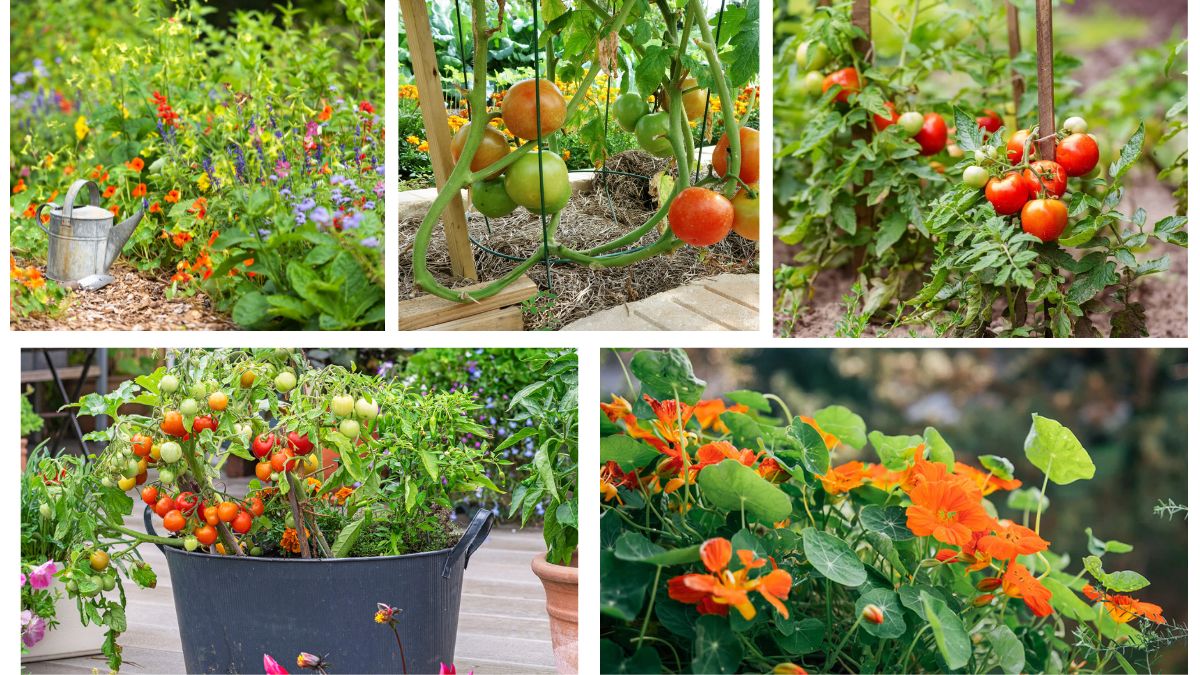Companion planting is an age-old gardening practice that pairs plants together based on their ability to enhance each other’s growth, deter pests, or improve flavor. Among the most popular and effective pairings is nasturtiums (Tropaeolum majus) grown alongside tomatoes (Solanum lycopersicum). While both plants are beautiful and productive in their own right, planting them together unlocks a range of benefits that can improve the health, yield, and aesthetics of your vegetable garden.
So why should you grow nasturtiums with tomatoes? In this article, we’ll explore the multiple advantages of this classic companion planting duo — from natural pest control to soil improvement, visual appeal, and culinary versatility — and provide practical tips for successfully integrating them into your garden.
An Introduction to Nasturtiums and Tomatoes
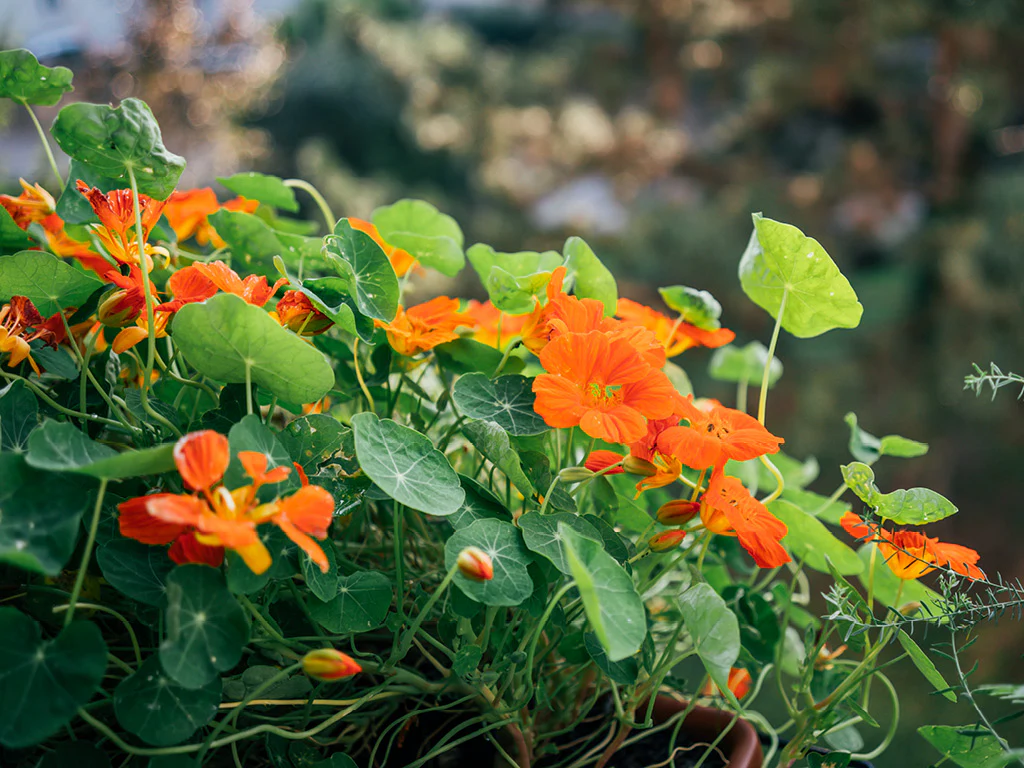
Before understanding their synergy, it’s helpful to learn a bit about each plant:
Nasturtiums (Tropaeolum majus)
- Type: Annual flowering plant
- Bloom Colors: Yellow, orange, red, cream
- Growth Habit: Trailing or bushy
- Edible: Flowers, leaves, and seeds
- Preferred Conditions: Full sun to partial shade, well-drained soil
Tomatoes (Solanum lycopersicum)
- Type: Warm-season vegetable
- Growth Habit: Determinate (bush) or indeterminate (vining)
- Preferred Conditions: Full sun, fertile and well-drained soil, consistent moisture
When combined, these plants complement each other perfectly in both function and form.
The Benefits of Growing Nasturtiums With Tomatoes
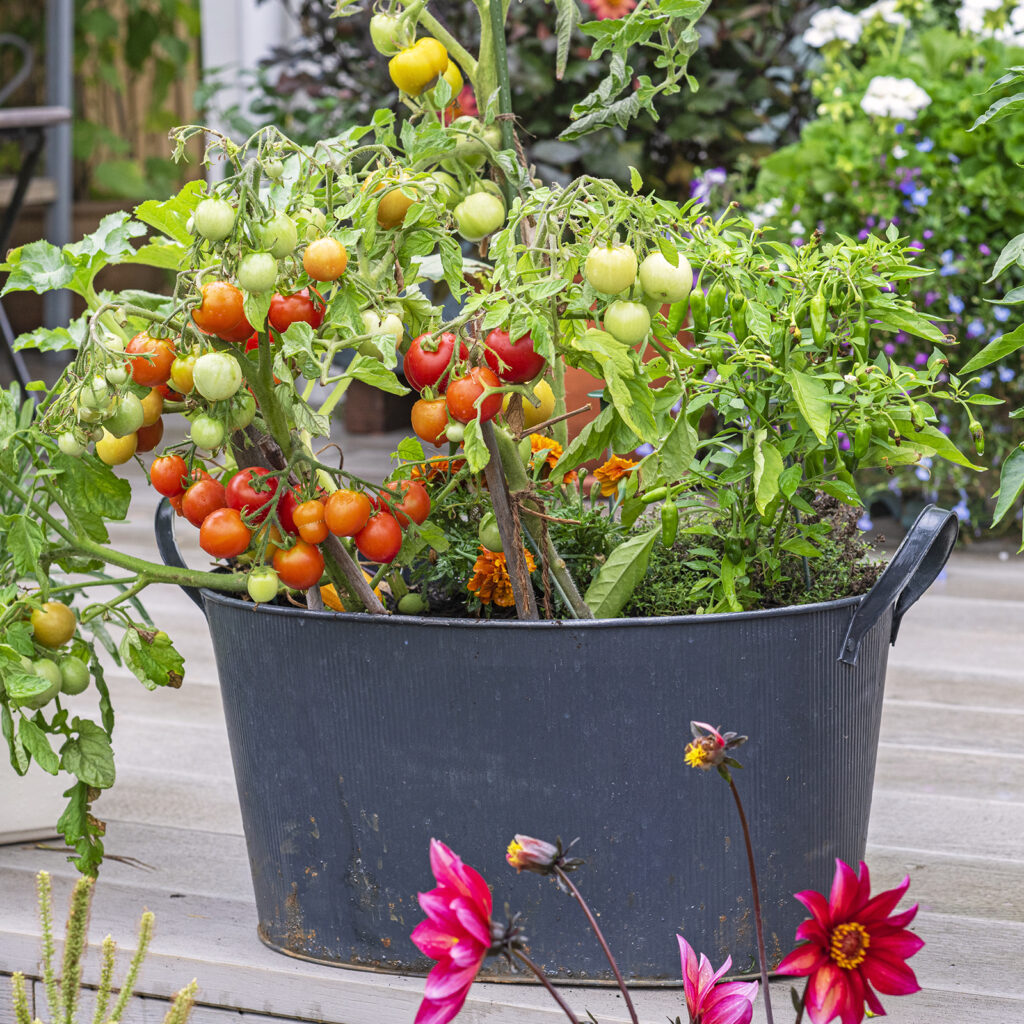
1. Natural Pest Control
One of the primary reasons gardeners grow nasturtiums with tomatoes is their ability to attract and trap harmful pests, protecting nearby crops.
Key Benefits:
- Aphid Magnet: Nasturtiums are highly attractive to aphids. Rather than infesting tomato plants, aphids prefer nasturtium leaves and flowers, acting as a “trap crop.”
- Repelling Whiteflies and Cucumber Beetles: Nasturtiums emit a mild peppery scent that deters whiteflies, cucumber beetles, and other common garden pests that can damage tomato plants.
- Decoy for Cabbage Worms and Squash Bugs: These pests are also drawn to nasturtiums, keeping them away from more vulnerable crops.
Result: Fewer pests targeting tomato leaves and fruits, reducing the need for chemical pesticides and supporting organic gardening practices.
2. Attracting Beneficial Insects
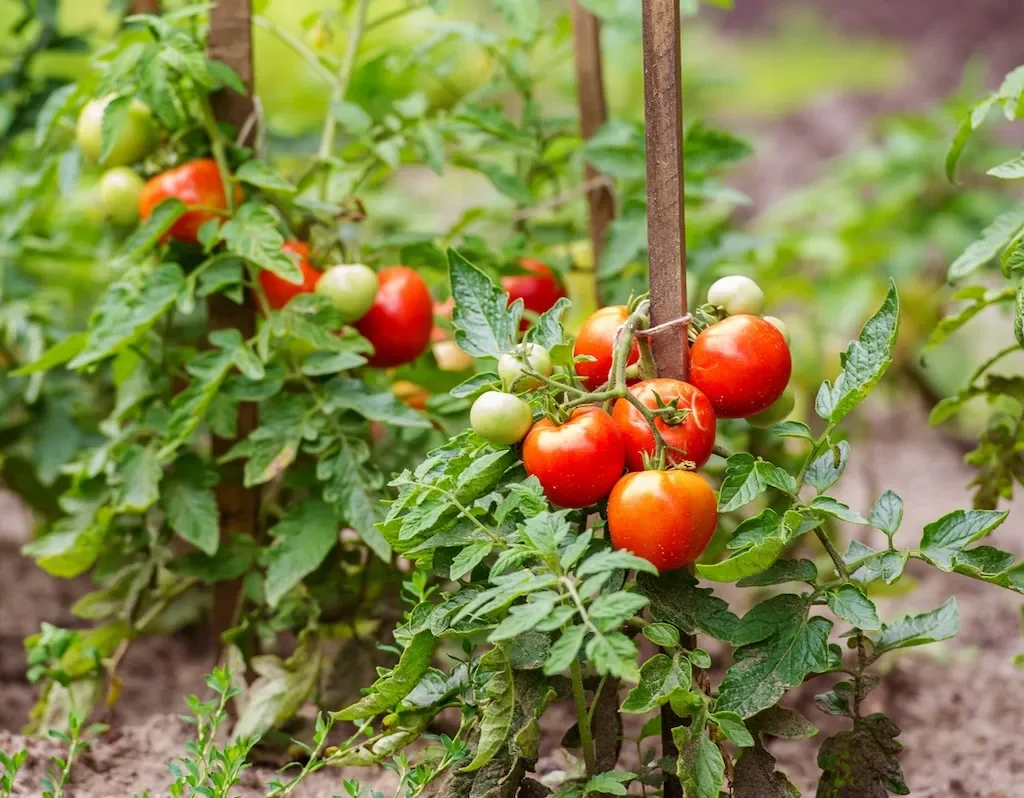
Nasturtiums not only deter harmful pests but also attract beneficial insects that help maintain a balanced garden ecosystem.
Key Insect Allies:
- Pollinators: Bees, hoverflies, and butterflies are drawn to nasturtium flowers, increasing pollination rates for tomatoes and other nearby plants.
- Predatory Insects: Lacewings and ladybugs, which feed on aphids and other pests, are more likely to frequent gardens with flowering nasturtiums.
Result: Enhanced natural pest control and improved pollination for a healthier, more productive tomato crop.
3. Soil Health Improvement
Companion planting with nasturtiums can indirectly benefit the soil environment around tomatoes.
Key Advantages:
- Groundcover Effect: Trailing nasturtiums act as a living mulch, covering the soil and reducing moisture evaporation, which is particularly beneficial during hot summer months.
- Weed Suppression: Their broad, lush leaves block sunlight from reaching weed seeds, minimizing competition for water and nutrients.
- Erosion Control: Nasturtiums protect the soil surface, reducing erosion and runoff during heavy rains.
Result: Improved soil health, reduced water loss, and less competition for your tomato plants.
4. Enhancing Garden Aesthetics
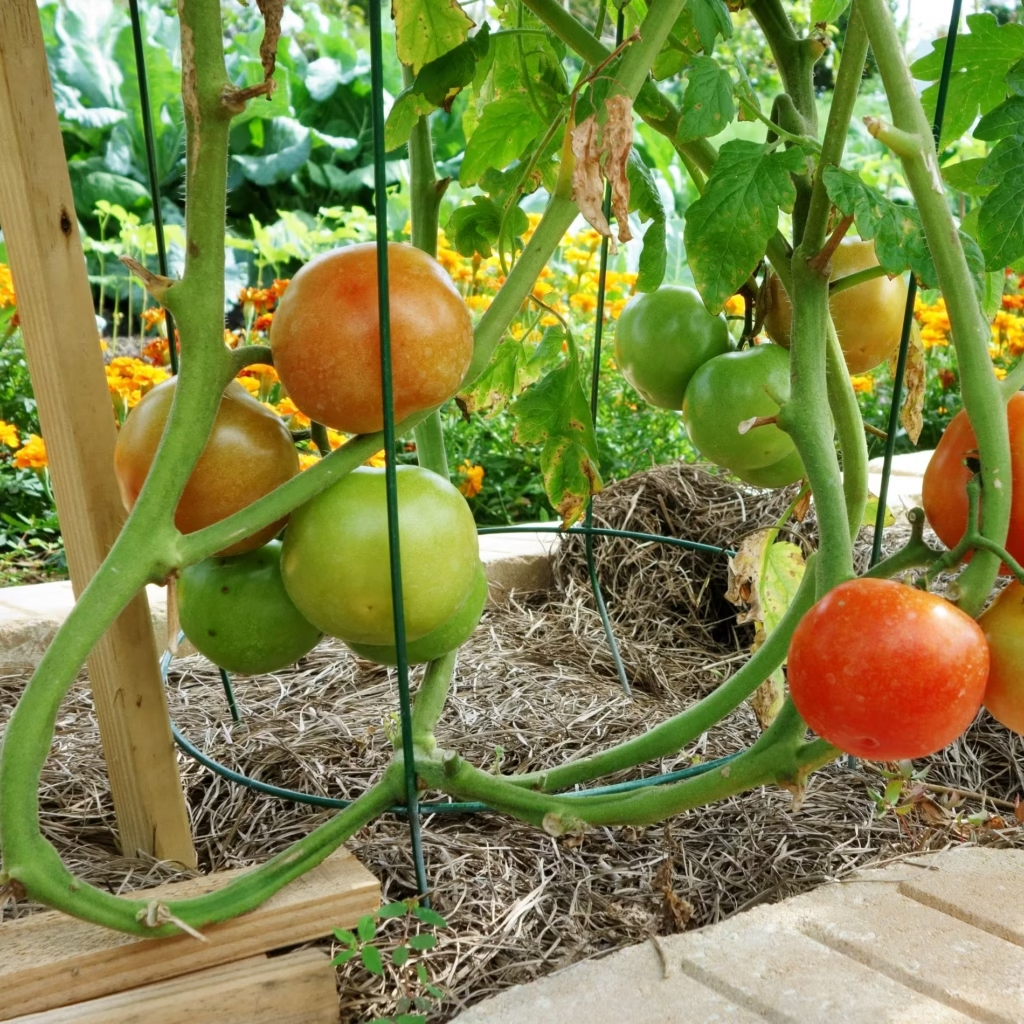
In addition to practical benefits, nasturtiums and tomatoes make a visually appealing pair.
Key Visual Features:
- Colorful Blooms: The bright reds, oranges, and yellows of nasturtium flowers create a striking contrast against the deep green foliage and red fruit of tomato plants.
- Versatile Growth Habits: Nasturtiums can trail along the ground, climb up tomato cages, or cascade from containers, adding layers of texture and color to your garden.
Result: A visually vibrant, inviting, and diverse garden space.
5. Culinary Uses for Both Plants
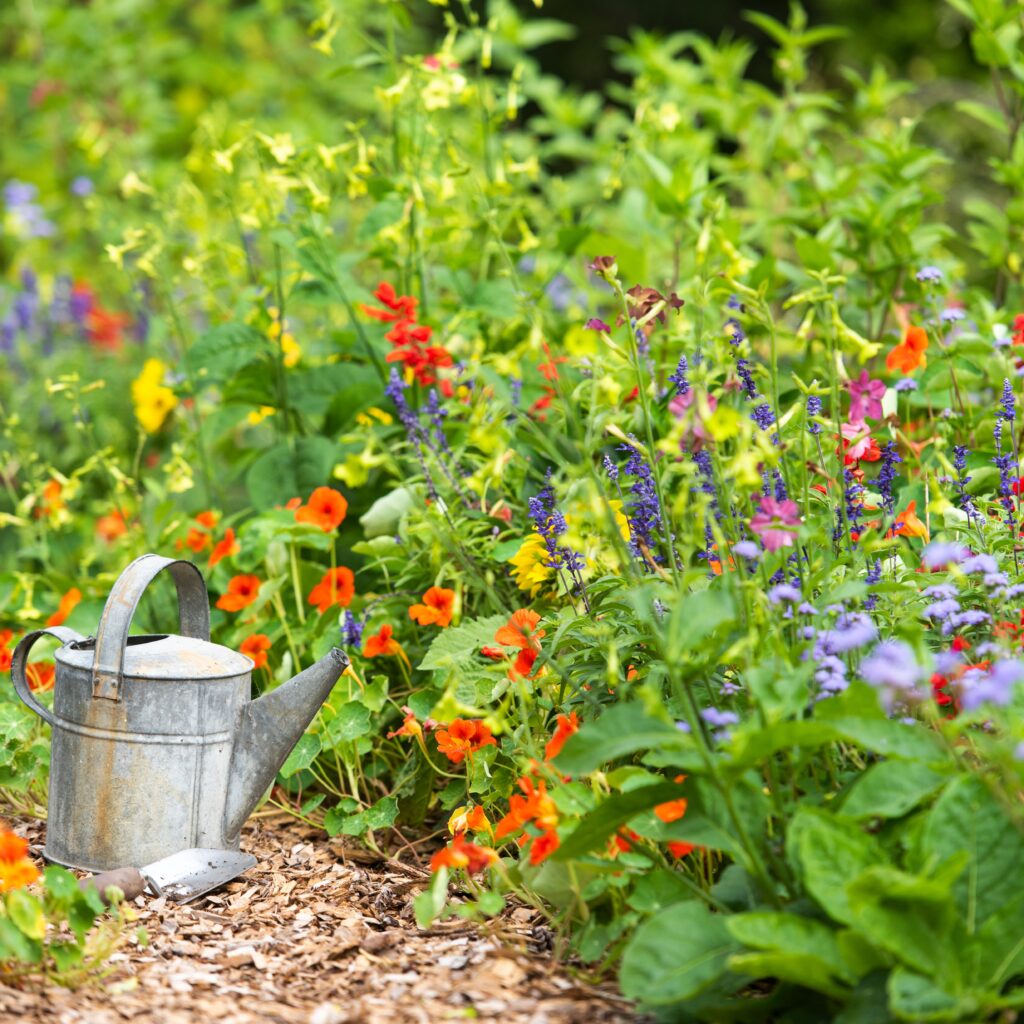
Another delightful reason to grow these two plants together is their dual culinary value.
Nasturtiums:
- Edible Flowers: Peppery-tasting, colorful blooms add a decorative, zesty touch to salads, soups, and garnishes.
- Leaves: Young leaves are edible and have a mild, peppery flavor.
- Seeds: Can be pickled and used as a caper substitute.
Tomatoes:
- A versatile staple in countless dishes — from salads and sauces to soups and preserves.
Result: Fresh, homegrown ingredients with complementary flavors readily available for creative, garden-fresh meals.
How to Grow Nasturtiums With Tomatoes Successfully
To fully reap the benefits of this companion planting duo, follow these simple guidelines:
Site Selection
- Choose a sunny location that receives at least 6–8 hours of direct sunlight daily.
- Ensure the soil is well-drained and enriched with organic matter.
Planting Nasturtiums
- Sow nasturtium seeds directly outdoors after the last frost date.
- Plant seeds about 10–12 inches from the base of tomato plants to allow airflow and avoid crowding.
- Water consistently but avoid overwatering, especially in heavy soils.
Planting Tomatoes
- Start with healthy seedlings.
- Space determinate (bush) tomatoes about 24–36 inches apart; indeterminate (vining) varieties need 36–48 inches.
- Stake or cage vining tomatoes to support upward growth and provide nasturtiums with structures to climb if desired.
Watering and Care
- Water both plants regularly, especially during dry spells.
- Avoid watering the foliage of tomatoes to prevent fungal diseases.
- Deadhead spent nasturtium flowers to prolong blooming.
Additional Companion Plants to Consider
While nasturtiums pair wonderfully with tomatoes, they also work well alongside other crops, offering similar benefits. Consider adding:
- Basil: Enhances tomato flavor and repels mosquitoes and flies.
- Marigolds: Repel nematodes and aphids.
- Chives: Deter aphids and improve overall garden health.
These combinations create a diverse, naturally resilient garden ecosystem.
Conclusion
Growing nasturtiums with tomatoes is one of the smartest and most rewarding companion planting strategies for home gardeners. This pairing not only adds stunning visual appeal to your vegetable beds but also promotes natural pest control, attracts beneficial insects, improves soil health, and offers unique culinary delights.
By integrating nasturtiums around your tomato plants, you reduce the need for chemical interventions, support pollinator populations, and enjoy a vibrant, colorful, and productive garden space. It’s a simple, beautiful, and sustainable approach to gardening that honors time-tested traditions while benefiting both plants and gardeners alike.
So, the next time you plant tomatoes, be sure to reserve space for some bright, cheerful nasturtiums — your tomatoes (and your kitchen) will thank you.
